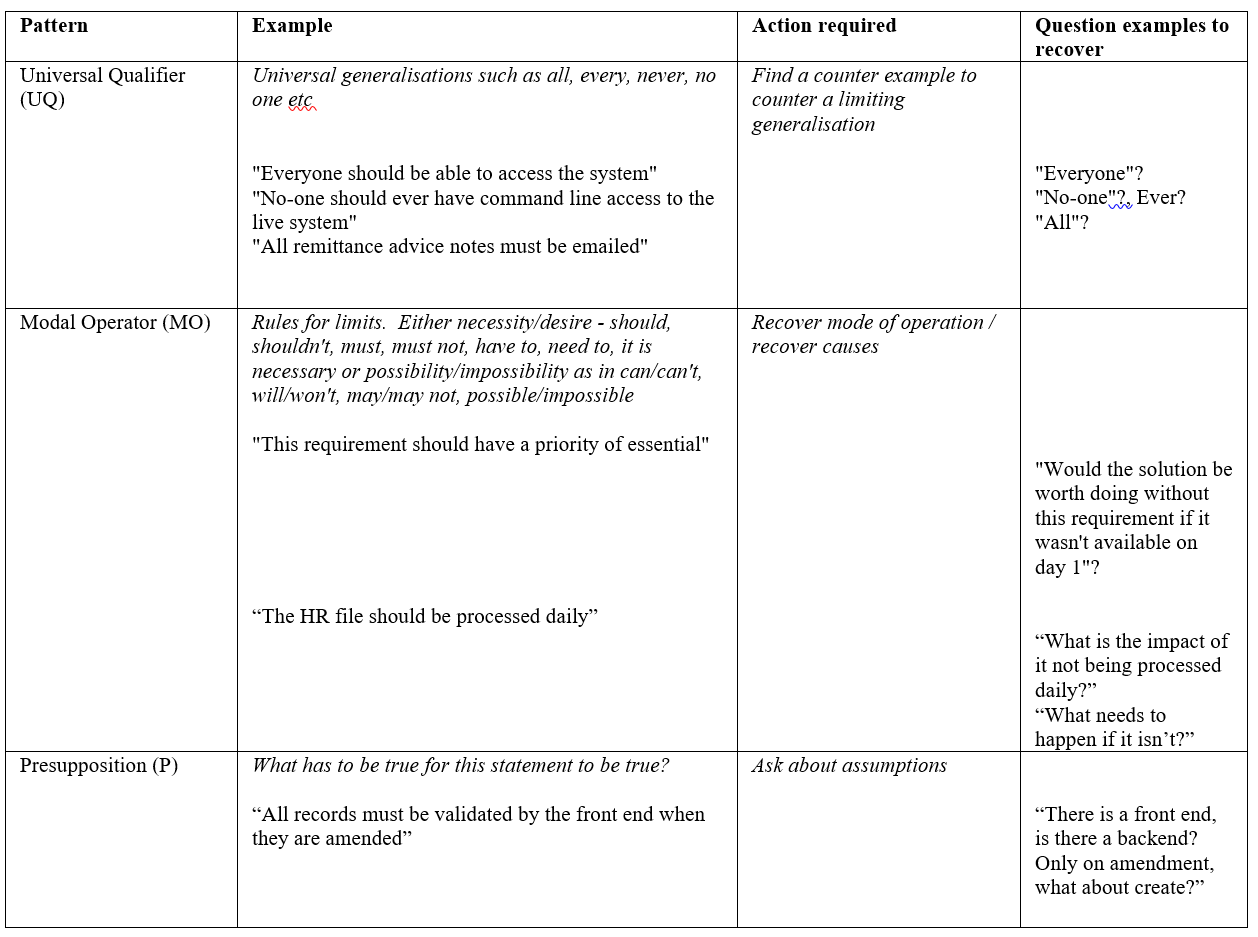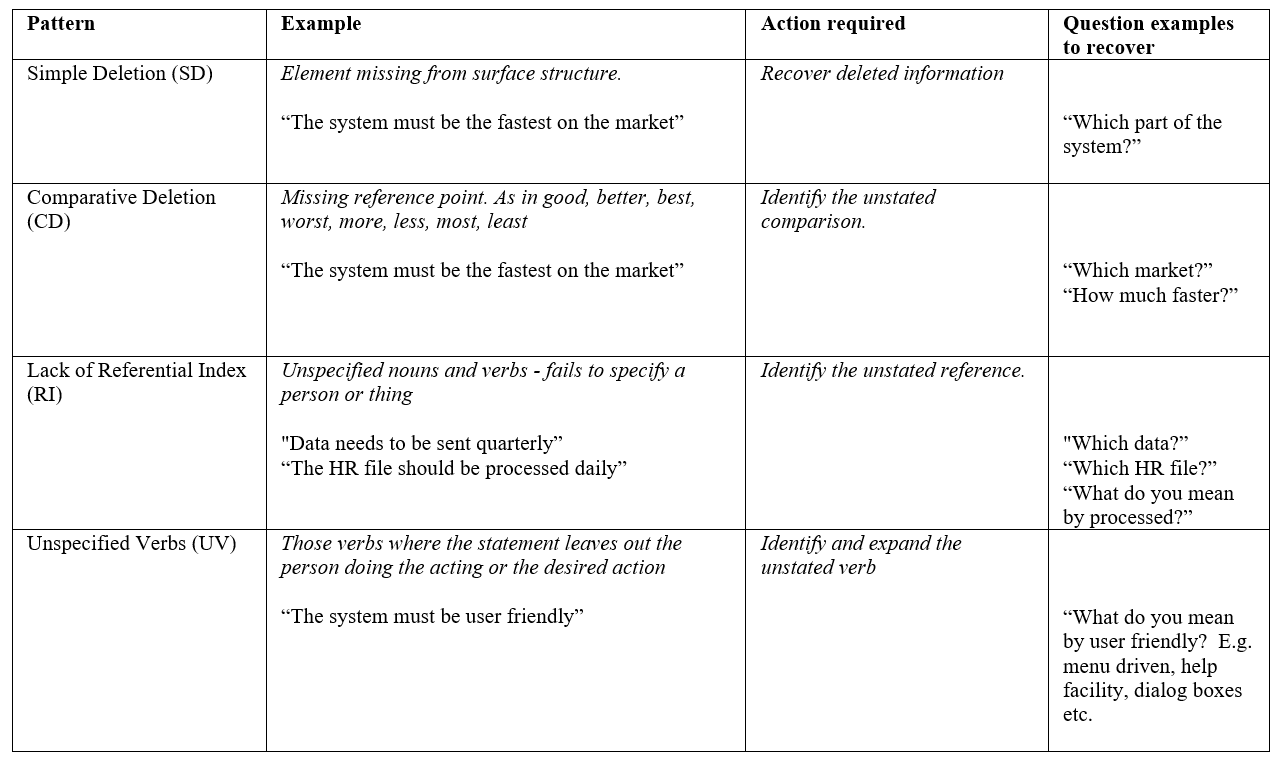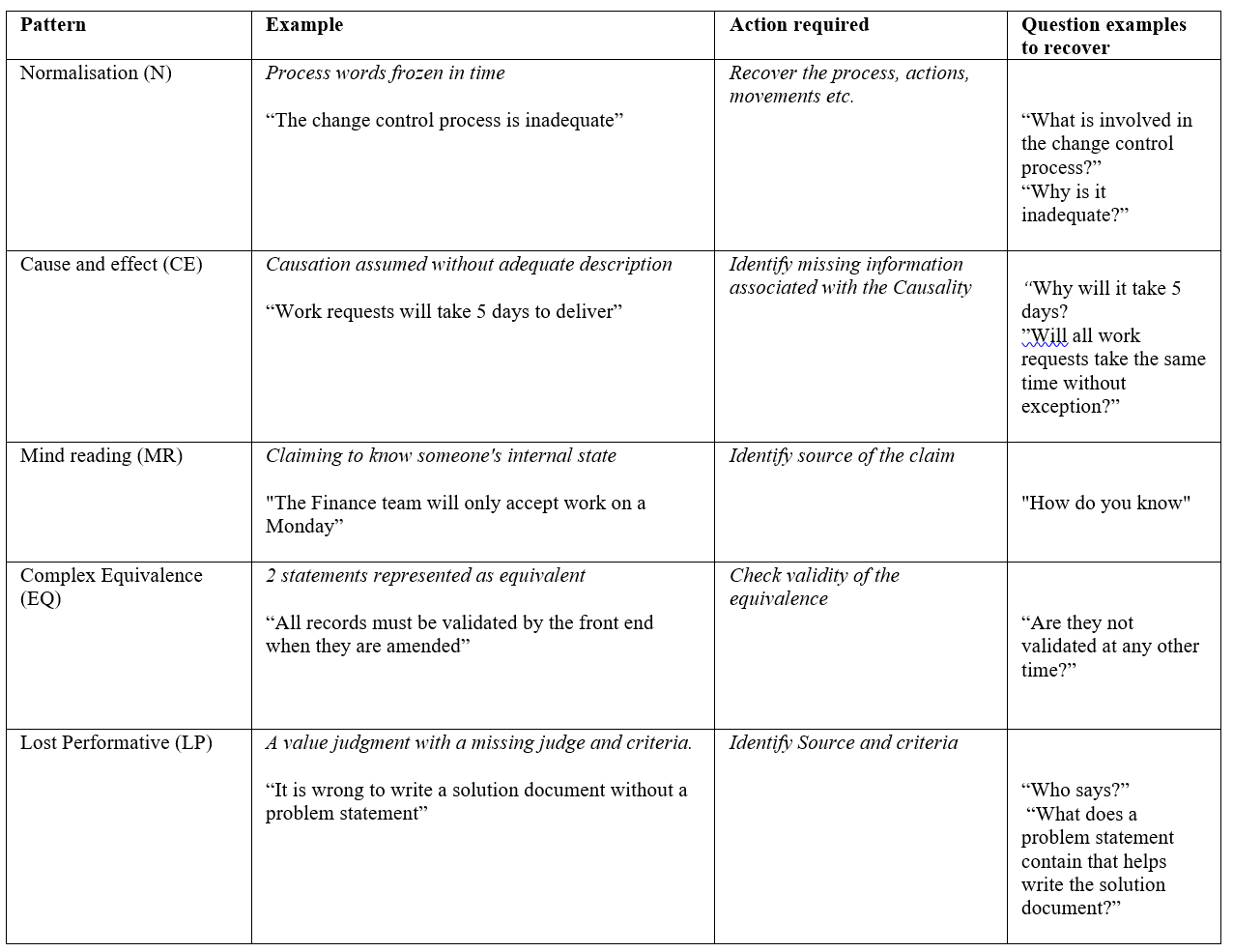
Below are a number of sentences extracted from requirements documents. The techniques in this article use a NLP technique called the Meta model which can be used to identify ambiguity and where information is missing.
For an introduction to what NLP is please read the introduction in the following article – How NLP can be used to improve communication with stakeholders.
For a summary of the meta model to provide context please read – Using NLP to explain ambiguity from gathering and documenting requirements.
Read the following requirements and decide for yourself first before reading any further whether and how these requirements can be improved or what questions could be asked to ensure information is not missing.
1. All remittance advice notes must be emailed
2. The requirement should have a priority of essential
3. The HR file should be processed daily
4. All records must be validated by the front end when they are amended
5. Data needs to be sent quarterly
6. The system must be the fastest on the market
7. The system must be user friendly
As explained in the Using NLP to explain ambiguity from gathering and documenting requirements there are 3 types of language patterns to look out for. These are:
1. Generalisation
2. Deletion of information
3. Distortion
See table below for an explanation of the different types of language patterns, the example requirements and what actions are required by the business analyst to overcome ambiguity.
Generalisation

Deletion

Distortion

Thoughts? Questions? Please share in the comments.
